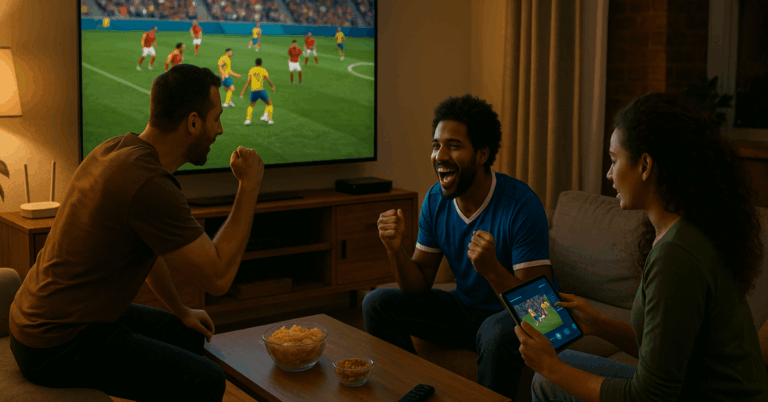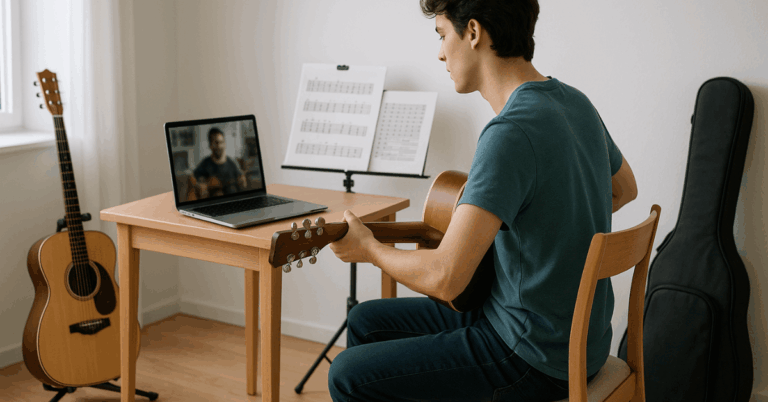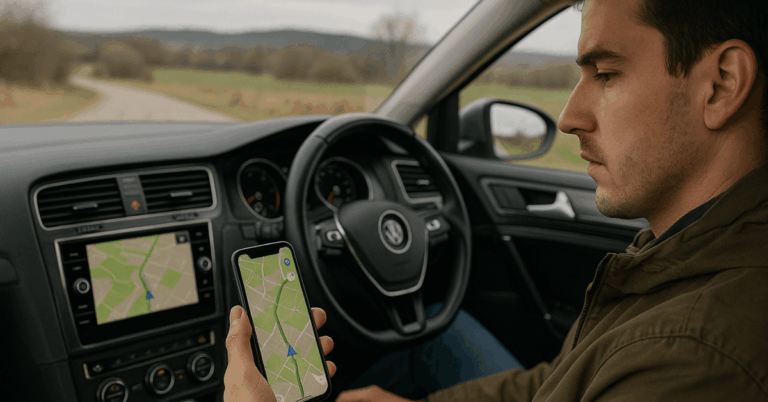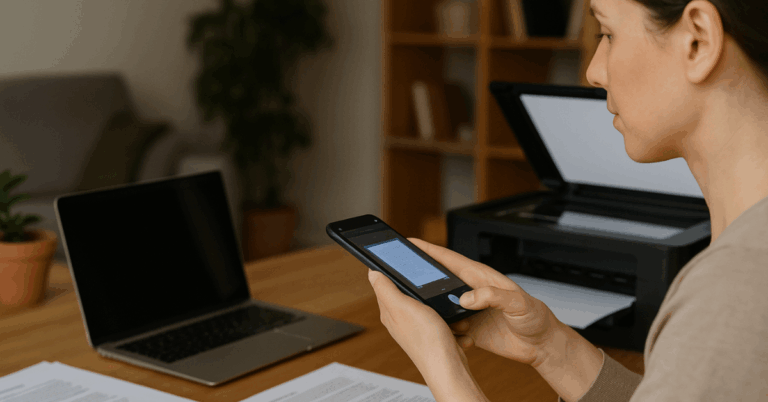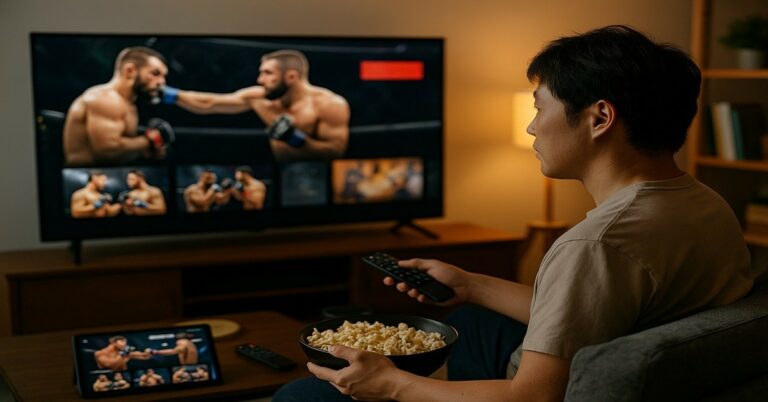Learning music online now rivals studio lessons for structure, feedback, and reach. Many learners play the piano online because flexible schedules, instant resources, and clear progress tracking remove the usual barriers.
Strong programs blend video, notation, and interactive feedback so consistent practice turns into steady results. Evidence-backed habits, spaced practice, timing work, and reflection, raise retention and confidence alongside technique.
Playing the Piano Online Became Very Simple
Digital platforms make entry simple for absolute beginners and returning players. Structured paths usually combine short video lessons, graded sheet music, and interactive drills that check note accuracy and rhythm.
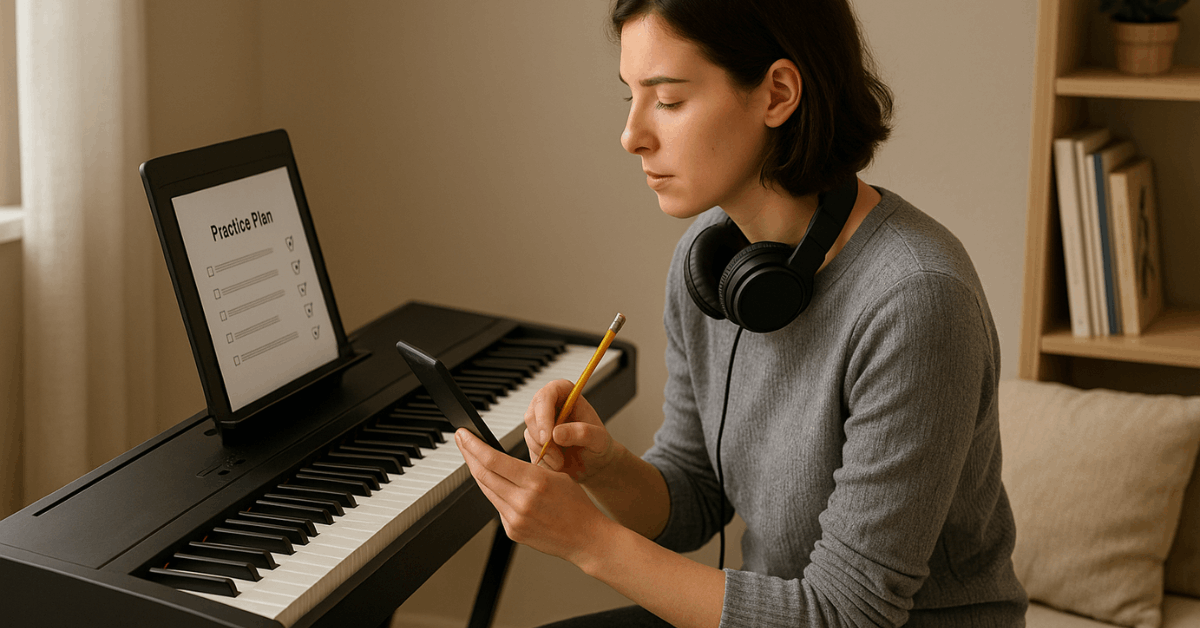
Open access keeps costs predictable through trials or low subscriptions while exposing learners to multiple genres and teachers. Motivation still matters; without a teacher in the room, a calendar and clear goals keep practice honest.
Choosing an Online Platform
Finding a platform that matches goals, budget, and learning style prevents churn. Strong options include mobile apps offering instant feedback, browser-based courses with coaches, and live video lessons scheduled around work or school.
Interfaces should make practice obvious, not overwhelming, and progress tracking should highlight what to fix next rather than only celebrating streaks.
Core Features that Help Progress:
- Set expectations around features before committing a card or time block.
- Interactive note detection and real-time feedback reduce guesswork during songs.
- Large, searchable libraries covering multiple levels prevent skill plateaus.
- Clean progress dashboards encourage consistent streaks without gimmicks.
- Guided technique videos address posture, fingering, and sound production.
- Optional live check-ins provide human accountability at key milestones.
Popular Options
Flowkey, Simply Piano, Yousician, Pianote, and Skoove represent accessible starting points; MuseScore supplies extensive notation, while Lessonface lists vetted teachers for private sessions.
Pick one core platform and stick with it through a beginner piano course module before switching, since hopping tools too early can reset momentum.
Essential Tools and Setup
A compact digital piano or keyboard fits most spaces and budgets, and headphones allow for late-night practice. Weighted keys imitate acoustic resistance and train finger control more effectively than unweighted actions.
A sturdy stand, adjustable bench, and pedal improve posture and sound shaping. When portability matters, a 61-key keyboard works; for long-term development, an 88-key digital piano offers a full range.
Searching “digital piano vs keyboard” will surface models with USB-MIDI, letting apps send feedback or a virtual piano keyboard display notes on screen.
Learning Methods That Work Online
Mixing formats keeps progress balanced and avoids blind spots. Self-paced video builds repertoire quickly; interactive apps test rhythm and pitch accuracy; live online teachers correct technique and assign targeted drills.
Structured courses deliver clear milestones and warm-ups so practice doesn’t stall on choice overload.
Self-Paced Video Lessons
Curated YouTube channels and course libraries help visualize posture, fingering, and phrasing. Treat videos as demonstrations, then apply concepts immediately on the keys rather than binge-watching.
Interactive Apps
Apps analyzing microphone or MIDI input identify wrong notes and timing drift. Tight loops, short sections repeated with feedback, build accuracy without draining motivation.
Live Online Teachers
Periodic 30- or 45-minute sessions keep technique honest and resolve persistent problems faster than guessing. Upload short clips before lessons so the teacher arrives prepared.
Structured Courses
Sequenced modules outline skills, songs, and theory in a logical arc. Completing checkpoints avoids the “random song trap” and supports deliberate practice.
Core Skills to Practice
Foundational skills grow together when planned correctly. Begin learning sheet music with treble and bass clef basics, and balance notation by studying familiar tunes to cement motivation.
Build finger mechanics through five-finger patterns, then add scales, chord shells, and simple arpeggios for harmonic fluency.
Rhythm control deserves daily attention because precise timing underpins every style; coupling practice with a metronome improves pulse perception and coordination for novices.
Advanced Paths and Motivation
After fundamentals settle, expand into improvisation, chord voicings, ear training, and genre studies for classical, pop, or jazz.
Recording short performances builds self-assessment and stage readiness while creating a progress log.
Online recitals or community challenges add deadlines, nudging accountability without travel logistics. Music practice supports attention and working memory, useful secondary benefits that reinforce life beyond the keyboard.
Practical Tips for Faster Results
Consistent habits turn effort into durable memory and confident playing. Short, regular sessions spaced across the week beat occasional marathons for retention and motivation.
A simple practice routine planner and periodic self-recordings reveal what has improved and what still slips.
- Schedule 20–30 focused minutes on most days, favoring spaced practice over cramming.
- Use a metronome for beginners and vary subdivisions; alternate click work with musical play-along tracks.
- Track pieces, tempi, and trouble spots in a single note file to guide the next session.
- Join supportive groups such as the Reddit Piano Community for feedback and accountability.
- Rotate technical drills (scales, chords) with songs so technique feeds real music.
Technique Essentials: Posture and Hand Shape
Sound quality starts at the bench. Sit with hips slightly higher than knees, shoulders relaxed, and forearms roughly parallel to the keys.
Keep a gentle hand arch with firm fingertips; avoid collapsed joints or a flying fifth finger that slaps rather than contacts. Maintain neutral wrists to prevent fatigue and produce an even tone.
Anchor feet for balance, then introduce pedal control once basic coordination stabilizes. Deliberate slow work on tone, legato connection, and evenness grows the tactile awareness needed for expressive phrasing.
Common Beginner Mistakes
Guarding against predictable pitfalls prevents months of unlearning. A quick check before practice can save considerable time later.
- Skipping fundamentals such as posture, relaxed hands, and coordinated fingering.
- Practicing without tempo control, causing rush-and-drag habits that resist correction.
- Jumping between songs without finishing phrases, dynamics, and clean transitions.
- Ignoring theory basics, which slows chord recognition and pattern spotting.
- Staring at hands constantly, blocking fluent reading and independent hands.
Reading Music vs Playing by Ear
Notation unlocks historical repertoire, ensemble work, and precise dynamics, while ear-led learning accelerates chord fluency and memorization.
Consider interactive music theory modules for intervals, key signatures, and rhythm dictation; short quizzes strengthen reading without overwhelming practice time.
Light-guided keyboards and on-screen note prompts can ease entry; keep progressing toward independent reading to avoid reliance on prompts when pieces become complex.
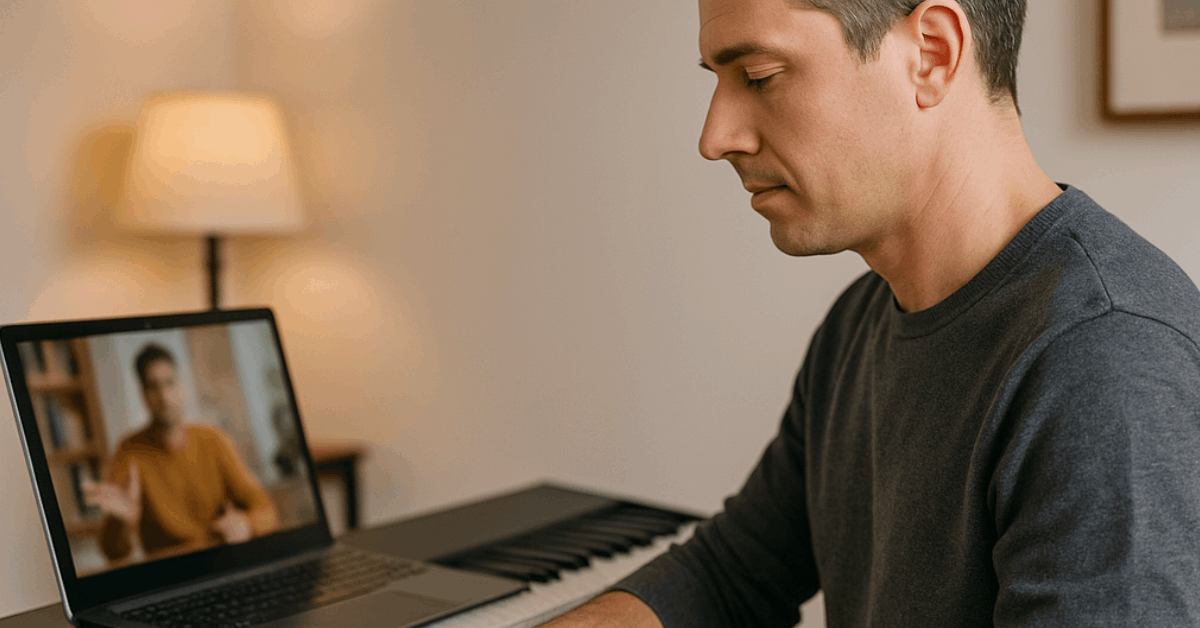
Practice That Sticks
Spaced practice, the strategic distribution of work across days, improves long-term memory more than single long sessions. Rotate difficult bars in small loops, then integrate them back into the full piece at a controlled tempo.
Mental practice away from the instrument reinforces structure and fingering, while end-of-session notes create a clear next step.
These approaches align with decades of cognitive research on distributed learning benefits, making effort more productive in less time.
First Performance: Low-Stress Steps
Mock run-throughs at home simulate concert conditions and expose weak joins between sections.
Warm up hands gently, breathe to reduce tension, and visualize starting tempo and first bar before touching the keys. Treat small slips as passing events and finish the piece rather than restarting mid-performance.
Established exam bodies recommend planning, controlled breathing, and focusing on musical enjoyment, habits that lower nerves for beginners and returners alike.
Conclusion
Clear goals, a stable setup, and a realistic calendar make online learning effective for busy schedules.
Platforms and teachers provide structure; evidence-based practice converts structure into a durable skill.
Set targets, track tempo gains, celebrate finished pieces, and keep adding songs that personally matter. Consistent work delivers musical payoff while strengthening attention and memory over time.
